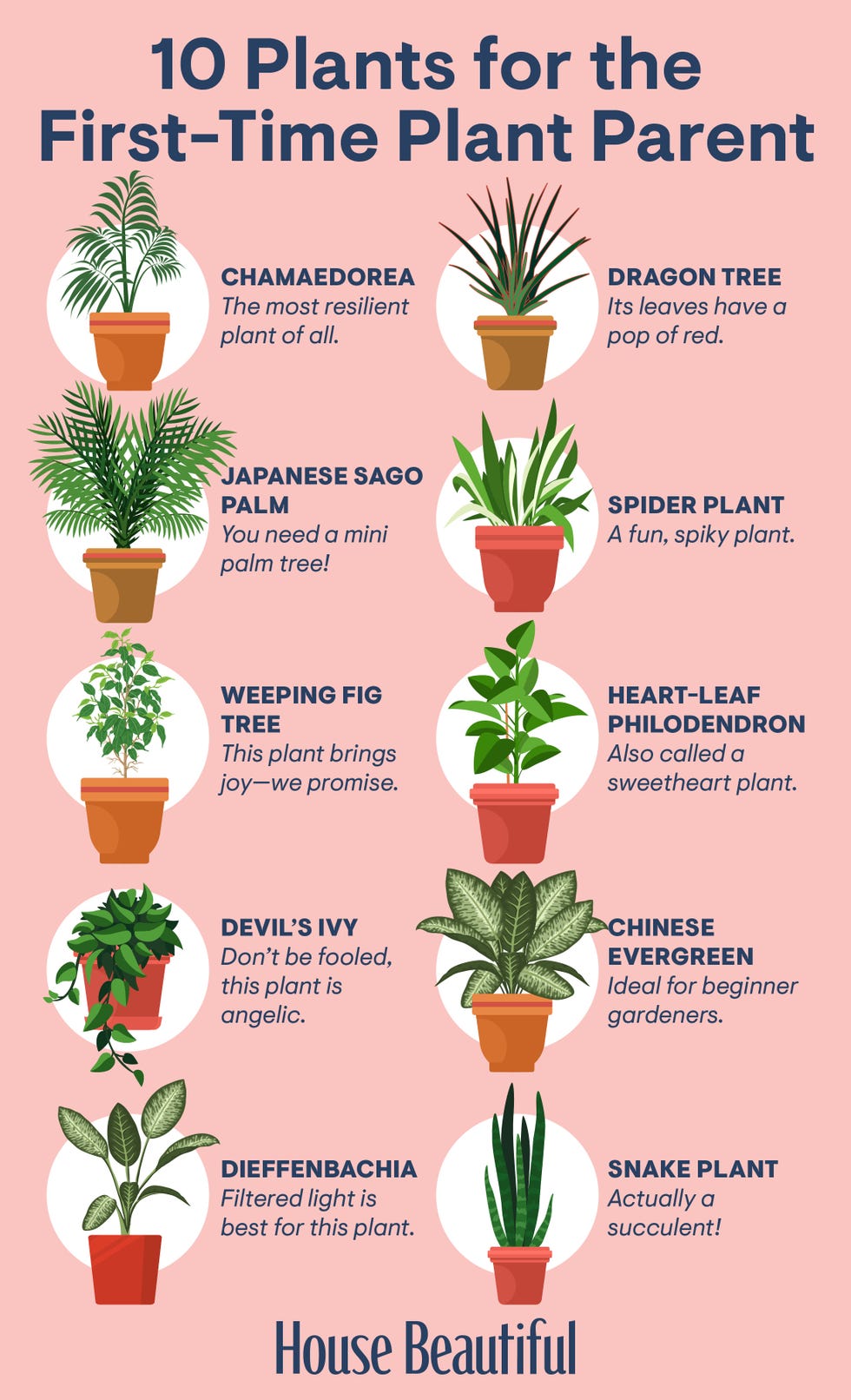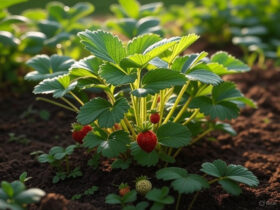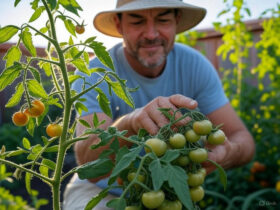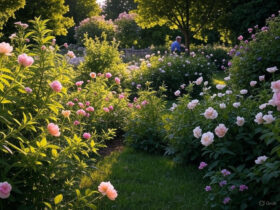Gardening can be a rewarding hobby. It brings joy and beauty to your space.
But where do you start if you’re new to gardening? Choosing the right plants is crucial for beginners. Some plants are easier to care for than others. They thrive with little effort and offer a great start to your gardening journey.
Starting with the right plants can make gardening fun and stress-free. Many beginner gardeners feel overwhelmed by the vast choices available. Understanding which plants are low-maintenance can ease this feeling. These plants can survive with minimal care, making them perfect for those learning the ropes. You’ll find satisfaction in watching them grow and flourish. With the right choices, your garden can become a vibrant, lively space. Let’s explore some of the best plants for beginner gardeners. They’ll help you nurture your green thumb with confidence.

Top Easy-to-grow Plants
Starting a garden can be a fun and rewarding hobby. For those new to gardening, choosing the right plants is crucial. You want plants that are easy to care for and forgiving if you make mistakes. In this guide, we’ll explore some of the best plants for beginner gardeners. These plants are hardy and require minimal effort, making them perfect for those just starting their gardening journey.
Table of Contents
Succulents
Succulents are among the easiest plants to grow. These plants are known for their thick, fleshy leaves that store water. They are perfect for beginner gardeners because they are very low-maintenance. Here are some reasons why succulents are ideal beginner plants for a garden:
- Low Water Needs: Succulents thrive on minimal watering. Overwatering can harm them, so they are forgiving if you forget to water them.
- Versatile: They can grow both indoors and outdoors, making them flexible for different spaces.
- Variety: There are many types of succulents to choose from, each with unique shapes and colors.
- Pest-Resistant: Succulents are less likely to attract pests, reducing the need for pesticides.
Here’s a simple care guide for succulents:
| Aspect | Requirement |
|---|---|
| Watering | Once every 2-3 weeks |
| Light | Bright, indirect sunlight |
| Soil | Well-draining soil |
With their striking appearance and minimal care needs, succulents are undoubtedly some of the best garden plants for beginners.
Spider Plants
Spider plants are another excellent choice for beginner gardeners. They are known for their long, arching leaves and small white flowers. Spider plants are incredibly resilient and can thrive in various conditions. Here are a few reasons why spider plants are among the easiest plants to grow:
- Adaptable: They can grow in low light and bright light, making them suitable for different indoor environments.
- Air-Purifying: Spider plants help clean the air by removing toxins, making your home healthier.
- Fast-Growing: These plants grow quickly and can produce “babies” or offshoots that can be easily propagated.
- Low Maintenance: They don’t need much attention, just occasional watering and indirect sunlight.
Here’s how to care for spider plants:
| Aspect | Requirement |
|---|---|
| Watering | Once a week |
| Light | Indirect sunlight |
| Soil | Well-draining, loamy soil |
Spider plants are not only easy garden plants for beginners, but they also add a touch of green to your home, making them perfect for novice gardeners.
Low-maintenance Flowers
Starting a garden can be an exciting adventure. Choosing the best plants for beginner gardeners is crucial to ensure success. Low-maintenance flowers are perfect for those new to gardening. These flowers are easy to grow and require minimal care, making them ideal for beginners. Let’s explore some of the easiest plants to grow that bring vibrant colors and joy to your garden.
Marigolds
Marigolds are among the best garden plants for beginners. They are known for their bright, cheerful flowers and ability to thrive in various conditions. Here are some reasons why marigolds are great for beginner gardeners:
- Easy to Grow: Marigolds germinate quickly and grow well in most soil types.
- Low Maintenance: These flowers need minimal care. Regular watering and occasional deadheading are usually enough.
- Pest Repellent: Marigolds have a strong scent that keeps many pests away, making them a natural choice for protecting other plants.
- Versatile: They can be planted in flower beds, containers, or even vegetable gardens.
Here is a quick guide to growing marigolds:
| Aspect | Details |
|---|---|
| Soil | Well-drained, moderately fertile |
| Light | Full sun |
| Water | Moderate, avoid overwatering |
| Bloom Time | Spring to fall |
Marigolds are indeed one of the easiest plants to grow. They bring a splash of color and are perfect for those just starting their gardening journey.
Zinnias
Zinnias are another excellent choice for beginner gardeners. These flowers are vibrant, hardy, and bloom profusely. Here are some reasons zinnias are ideal for those new to gardening:
- Simple to Plant: Zinnias are easy to plant from seeds and grow quickly.
- Low Care Requirements: These flowers need minimal attention. Regular watering and some sunlight are all they need.
- Long Blooming Period: Zinnias bloom from summer until the first frost, providing long-lasting beauty.
- Attract Pollinators: They attract butterflies and bees, which are beneficial for your garden.
Here is a quick guide to growing zinnias:
| Aspect | Details |
|---|---|
| Soil | Well-drained, average fertility |
| Light | Full sun |
| Water | Moderate, avoid wetting the foliage |
| Bloom Time | Summer to first frost |
Zinnias are one of the best plants for beginner gardeners. Their ease of care and vibrant blooms make them a favorite among the easiest plants to grow.
Herbs For Beginners
Starting a garden can be overwhelming, but choosing the right plants makes it easier. Herbs are among the best plants for beginner gardeners due to their resilience and ease of care. Two of the easiest plants to grow for novices are basil and mint. These beginner plants for garden enthusiasts provide both beauty and utility, perfect for anyone looking to start their green journey.
Basil
Basil is a favorite among easy garden plants for beginners. Its aromatic leaves add flavor to many dishes and make it a delightful addition to any garden.
Basil grows best in warm weather, making it ideal for summer planting. Here are some tips for growing basil:
- Plant basil in well-drained soil.
- Place it in a sunny spot; basil needs at least 6 hours of sunlight daily.
- Water regularly, but avoid overwatering as basil prefers slightly dry soil.
- Pinch off the tops of the plant regularly to encourage bushy growth.
To help you keep track of basil care, here’s a simple table:
| Requirement | Details |
|---|---|
| Sunlight | At least 6 hours |
| Watering | Regularly, keep soil slightly dry |
| Soil | Well-drained |
| Pruning | Pinch tops often |
Growing basil is a rewarding experience for beginners. It adds flavor to food and a fresh scent to your garden.
Mint
Mint is another top choice among best garden plants for beginners. Its vigorous growth and refreshing aroma make it a staple in many gardens.
Mint is hardy and adaptable, making it one of the easiest plants to grow. Follow these tips for mint care:
- Plant mint in a container to control its rapid spread.
- Place it in partial shade; mint tolerates less sunlight than basil.
- Keep the soil moist; mint thrives in damp conditions.
- Harvest regularly to prevent the plant from becoming too leggy.
Here’s a simple table to guide your mint care:
| Requirement | Details |
|---|---|
| Sunlight | Partial shade |
| Watering | Keep soil moist |
| Container | Recommended to control spread |
| Harvesting | Regularly |
Mint’s easy care and versatile use make it an excellent choice for beginner gardeners. It adds a refreshing touch to beverages and dishes while keeping your garden lively.

Vegetables To Start With
Starting a garden can be exciting and rewarding for beginners. Choosing the right vegetables is crucial for success. This guide highlights the best plants for beginner gardeners. These vegetables are easy to grow, require minimal care, and provide quick results. Let’s explore the easiest vegetables to start with.
Radishes
Radishes are among the easiest plants to grow. They are ideal for beginners due to their fast growth and minimal care requirements. Radishes can be harvested in just 3-4 weeks, making them perfect for impatient gardeners.
Here are key reasons why radishes are best garden plants for beginners:
- Quick Harvest: Radishes mature quickly, providing satisfaction in a short time.
- Minimal Space: They don’t require much space, so even small gardens work well.
- Easy Soil Preparation: Radishes thrive in loose, well-drained soil.
Follow these simple steps to grow radishes:
- Choose a sunny spot with well-drained soil.
- Sow seeds about 1/2 inch deep and 1 inch apart.
- Water regularly to keep the soil moist.
- Thin seedlings to ensure proper spacing.
- Harvest radishes when they reach the desired size.
Radishes add a crisp, spicy flavor to salads and dishes. Their vibrant colors also enhance garden aesthetics.
Lettuce
Lettuce is another excellent choice for beginner plants for garden. It’s versatile, grows quickly, and can be harvested multiple times. Lettuce varieties include leaf, romaine, and butterhead.
Reasons why lettuce is among the easy garden plants for beginners:
- Continuous Harvest: Lettuce can be harvested as leaves grow, providing a steady supply.
- Shade Tolerance: It grows well in partial shade, ideal for less sunny areas.
- Simple Care: Lettuce requires minimal care and is resistant to pests.
Here’s a simple guide to growing lettuce:
- Prepare a garden bed with rich, well-drained soil.
- Sow seeds about 1/4 inch deep.
- Space seeds 12 inches apart for optimal growth.
- Water consistently to keep soil moist.
- Harvest leaves regularly to encourage new growth.
Lettuce is perfect for fresh salads and sandwiches. Its quick growth and low maintenance make it a favorite among best plants for beginner gardeners.
Indoor Plant Options
Starting an indoor garden can be an exciting adventure. Choosing the right plants is crucial for success. Beginner gardeners often seek plants that are easy to care for. Indoor plant options offer a perfect starting point. These plants thrive indoors with minimal care. They are known for their resilience and adaptability. Let’s explore some of the best options for beginner gardeners.
Pothos
Pothos, also known as Devil’s Ivy, is one of the easiest plants to grow indoors. Its vibrant green leaves brighten any room. This plant is perfect for beginner gardeners. Pothos requires low maintenance and can thrive in various light conditions. It grows well in bright, indirect light but can tolerate low light.
- Watering: Allow the soil to dry out between waterings.
- Light: Prefers bright, indirect light but tolerates low light.
- Temperature: Thrives in temperatures between 65-85°F.
Pothos is also known for its air-purifying qualities. It helps to remove toxins from the air. This makes it a great addition to any home. For those new to gardening, pothos is truly one of the best garden plants for beginners. Its trailing vines create a beautiful display when placed on shelves or hung from pots.
Peace Lily
Peace Lily stands out for its elegant white blooms and lush foliage. It’s among the easiest plants to grow for beginners. This plant prefers indirect light and can tolerate low light conditions. Peace Lily is a forgiving plant, making it ideal for beginner gardeners.
- Watering: Keep the soil moist but not soggy.
- Light: Prefers indirect light; can tolerate low light.
- Temperature: Best in temperatures between 65-80°F.
Peace Lily also improves indoor air quality. It removes pollutants, promoting a healthier environment. This plant adds a serene touch to any indoor space. Its striking blooms offer a visual appeal, making it one of the best plants for beginner gardeners. With minimal care requirements, Peace Lily ensures a rewarding gardening experience.

Choosing The Right Soil
Starting a garden is exciting, especially with the right plants. The best plants for beginner gardeners thrive with suitable soil. Choosing the right soil is crucial for healthy growth. It provides nutrients and stability. The soil acts like a home for plants. Each type has unique benefits. Let’s explore options to find the perfect match for your garden.
Potting Mix
Potting mix is versatile. It’s ideal for container gardening. This mix is light and airy. It helps roots breathe. The easiest plants to grow, like herbs and succulents, love it. Potting mix contains peat moss, perlite, and sometimes compost. Each ingredient serves a purpose:
- Peat Moss: Retains moisture.
- Perlite: Improves drainage.
- Compost: Provides nutrients.
A table can illustrate the advantages:
| Ingredient | Benefit |
|---|---|
| Peat Moss | Moisture retention |
| Perlite | Better drainage |
| Compost | Natural nutrients |
Potting mix suits beginner plants for garden projects. Easy garden plants for beginners flourish with this soil. Remember to check moisture levels. Overwatering can be an issue. Regular monitoring keeps plants happy.
Seed Starting Mix
Seed starting mix is perfect for new beginnings. It is different from potting mix. This mix focuses on nurturing seeds. The mix is fine and light. It encourages sprouting. Best garden plants for beginners start well here. Components often include:
- Vermiculite: Keeps moisture steady.
- Coconut Coir: Environmentally friendly and retains water.
- Perlite: Ensures good airflow.
The mix supports initial growth. Young roots find nutrients easily. Here’s a simple comparison:
| Component | Function |
|---|---|
| Vermiculite | Stable moisture |
| Coconut Coir | Water retention |
| Perlite | Airflow improvement |
Seed starting mix is great for easy garden plants for beginners. It sets the stage for robust growth. Transitioning to potting mix is smooth. As plants mature, they need more space and nutrients. This journey begins with the right soil.

Watering Basics
Starting a garden can be both exciting and daunting, especially for beginners. One of the most important aspects of caring for plants is watering. Understanding the basics of watering can make a big difference in the health and growth of your plants. Here, we’ll break down the essentials of watering, focusing on how often to water and recognizing signs of overwatering. This will help you successfully grow the best plants for beginner gardeners.
Frequency
Watering frequency is crucial for the best garden plants for beginners. The needs of plants can vary, but there are some general guidelines that can help you get started:
- Check Soil Moisture: Before watering, check the soil moisture. Stick your finger an inch into the soil. If it feels dry, it’s time to water.
- Morning Routine: Watering in the morning is often best. It allows plants to absorb water before the sun gets too hot and reduces evaporation.
- Consistent Schedule: Maintaining a regular watering schedule helps. Most beginner plants for garden need water once a week. Adjust based on the weather and the specific plant needs.
Different plants have different watering needs. Here’s a basic guide for some of the easiest plants to grow:
| Plant | Watering Frequency |
|---|---|
| Succulents | Every 2-3 weeks |
| Herbs (e.g., Basil, Mint) | Once a week |
| Tomatoes | Twice a week |
| Pothos | Once every 1-2 weeks |
Signs Of Overwatering
While it’s important to keep your plants hydrated, overwatering is a common mistake, especially with easy garden plants for beginners. Overwatering can lead to several problems:
- Yellowing Leaves: One of the first signs of overwatering is yellow leaves. This happens because the roots are suffocating and can’t get oxygen.
- Wilting: It might seem counterintuitive, but overwatered plants can wilt. This is due to root rot, which prevents the plant from taking up water.
- Mold and Mildew: You might notice mold or mildew on the soil surface. This indicates too much moisture.
Here’s a quick reference to help identify and address overwatering in some of the best plants for beginner gardeners:
| Plant | Signs of Overwatering | Solution |
|---|---|---|
| Succulents | Soft, mushy leaves | Reduce watering and improve drainage |
| Herbs (e.g., Basil, Mint) | Yellow, droopy leaves | Allow soil to dry out between waterings |
| Tomatoes | Cracked fruit, wilted leaves | Water less frequently, ensure good drainage |
| Pothos | Yellowing leaves, root rot | Check drainage, let soil dry out |
By being mindful of these signs, you can adjust your watering habits and keep your beginner plants for garden healthy and thriving. Remember, the key to success with easy garden plants for beginners is finding the right balance in watering.
Frequently Asked Questions
What Is The Best Plant To Grow For Beginners?
The best plant for beginners is the spider plant. It’s easy to grow and requires minimal care. Spider plants thrive in various light conditions and need only occasional watering. Perfect for new gardeners!
What Is The First Thing I Should Plant In My Garden?
Start with easy-to-grow plants like lettuce, radishes, or tomatoes. These thrive in most climates and require minimal care. They provide quick rewards and help build gardening confidence. Choose based on your local climate and season for best results. Happy gardening!
What Is The Most Common Mistake Of First Time Gardeners?
First-time gardeners often overwater plants, leading to root rot and poor growth. Understanding plant needs prevents this mistake. Ensure proper soil drainage and research specific water requirements for each plant type to maintain healthy growth. Consistent monitoring helps avoid overwatering and encourages a thriving garden.
What Is A Good Garden Layout For A Beginner?
Start with a simple grid layout. Divide the garden into small sections. Plant easy-to-grow vegetables like tomatoes, lettuce, and herbs. Use raised beds for better soil control. Ensure proper spacing for each plant. Add a pathway for easy access and maintenance.
What Are The Easiest Plants For Beginners?
Spider plants, pothos, and snake plants are great for beginners. They need little care and are hardy.
How Often Should I Water My Indoor Plants?
Most indoor plants need water every 1-2 weeks. Check the soil; if it’s dry, water it.
Which Plants Are Low Maintenance For Beginners?
Aloe vera, jade plant, and ZZ plant are low maintenance. They need minimal water and sunlight.
Conclusion
Starting a garden can be fun and easy. Choose beginner-friendly plants like succulents or herbs. These plants require little care and offer great results. Enjoy the beauty and satisfaction of growing your own plants. Remember, gardening is a journey. Begin with these simple plants and grow your skills.
Happy gardening!










Leave a Reply